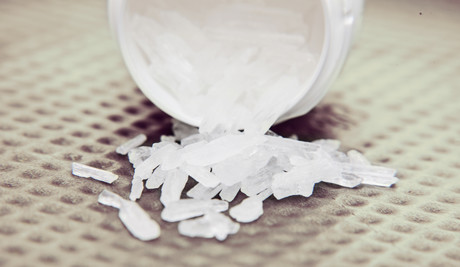FactCheck: it's true – WA has the nation's highest rate of methamphetamine use
By Nicole Lee, Professor at the National Drug Research Institute, Curtin University
Wednesday, 22 February, 2017

We have the worst rate of methamphetamine usage in the country. – West Australian Labor leader Mark McGowan, in The West Australian, February 6, 2017.
The illicit drug methamphetamine, commonly known as “speed”, “crystal meth” and “ice”, continues to in Australia as communities grapple with its .
In a outlining the Liberal and Labor party’s strategies for tackling drug-related crime in Western Australia, state Labor leader Mark McGowan was quoted as saying “we have the worst rate of methamphetamine usage in the country”.
Is that right?
Checking the source
When asked for sources to support his statement, a spokesperson for Mark McGowan referred The Conversation to the , particularly page 11 of the report, which says:
Meth/amphetamine use was higher in Western Australia (3.8%) than any other jurisdiction.
The spokesperson also referred The Conversation to the state government’s report, which states on page seven that meth use in Western Australia is higher than the national average.
And the spokesperson cited Western Australia’s Police Commissioner Karl O'Callaghan, who was as saying the state continues to have the highest methamphetamine use per capita in Australia.
You can read the full response from McGowan’s office .
Does Western Australia have the highest rate of methamphetamine use?
Yes. The latest available Australian data, published in the , show that 3.8% of the West Australian population had used methamphetamine in the 12 months prior to the survey. That’s nearly double the Australian average of 2.1%.
This isn’t a recent phenomenon. The rate of methamphetamine use in Western Australia has been higher than the rest of the nation since at least the 1990s.


The rate of methamphetamine use across Australia has been declining since 1998 – including in Western Australia. But over that time, the rate of use in the state has remained consistently higher than the Australian average.
The rate of use of many other drugs, including binge drinking, cannabis and pharmaceuticals for non-medical purposes, is also than the Australian average.
How do we know?
The data in the charts above come from the . It’s a reliable data set that’s been collected every three years since the 1990s.
It’s the only population level data we have that shows drug use trends. That means it collects data from the general population, including people who don’t use drugs at all, not just among specific groups of people who use drugs.
It’s not perfect; no dataset is. The survey has been criticised because it’s likely to underestimate drug use. But it is likely to underestimate usage of all drug types in all locations and relatively consistently over time, so it can give us a good sense of trends over time and differences between states.
All the other reliable data available is collected among people in , people in the , or populations of people who drugs. The rates of use among these groups is much higher than the general population, so the data doesn’t reflect drug use in the general community.
The is due to be released shortly. In general, drug use shows relatively small increases and decreases over time (typically less than half to one percentage point change between years), so it’s unlikely that the 2016 data will buck the long term trend too much.
People are using more potent forms of methamphetamine
Although the rate of methamphetamine use across Australia has stabilised at 2.1% of the population between 2010 and 2013, we have seen a major shift in the type of methamphetamine people are using. Western Australia has seen the as the rest of the country.
In 2010, most people who used methamphetamine preferred to use the less potent powder form, known as “speed”. But by 2013 around half the people surveyed preferred to use the stronger crystal form, known as “ice”. Speed and ice have the same chemical makeup, but ice is a lot stronger.
Changes in methamphetamine use among Australian users aged 14 or older, 2007 to 2013
This shows the main forms of methamphetamine used by recent users (meaning within the last 12 months) aged 14 or older, 2007 to 2013.
The majority of people who use methamphetamine use a small amount, very occasionally, for a short period in their life, and never experience any major problems with it. Around 70% of people who used a methamphetamine in the last year used it , and many of those used it only once or twice.
But for the small percentage who do experience problems, it is a drug that can cause significant .
Even though there hasn’t been a significant increase in the number of people using methamphetamine, the shift to the stronger form means that the risks – which include , , and problems – are amplified. As a result, we have seen a big increase in people who use methamphetamine regularly coming to , needing an , seeking and being .

, Professor at the National Drug Research Institute,
This article was originally published on . Read the .
Originally published
A Day in the Life of a rehabilitation physician and burnout coach
Dr Jo Braid is a rehabilitation physician and coach dedicated to transforming burnout recovery...
A Day in the Life of an advanced exercise physiologist
Luke Snabaitis is the first exercise physiologist in Queensland Health history to...
In conversation with AHPA CEO Bronwyn Morris-Donovan
Among the many reforms ���ϳԹ�Ⱥ�� Professions Australia's Bronwyn Morris-Donovan is...








